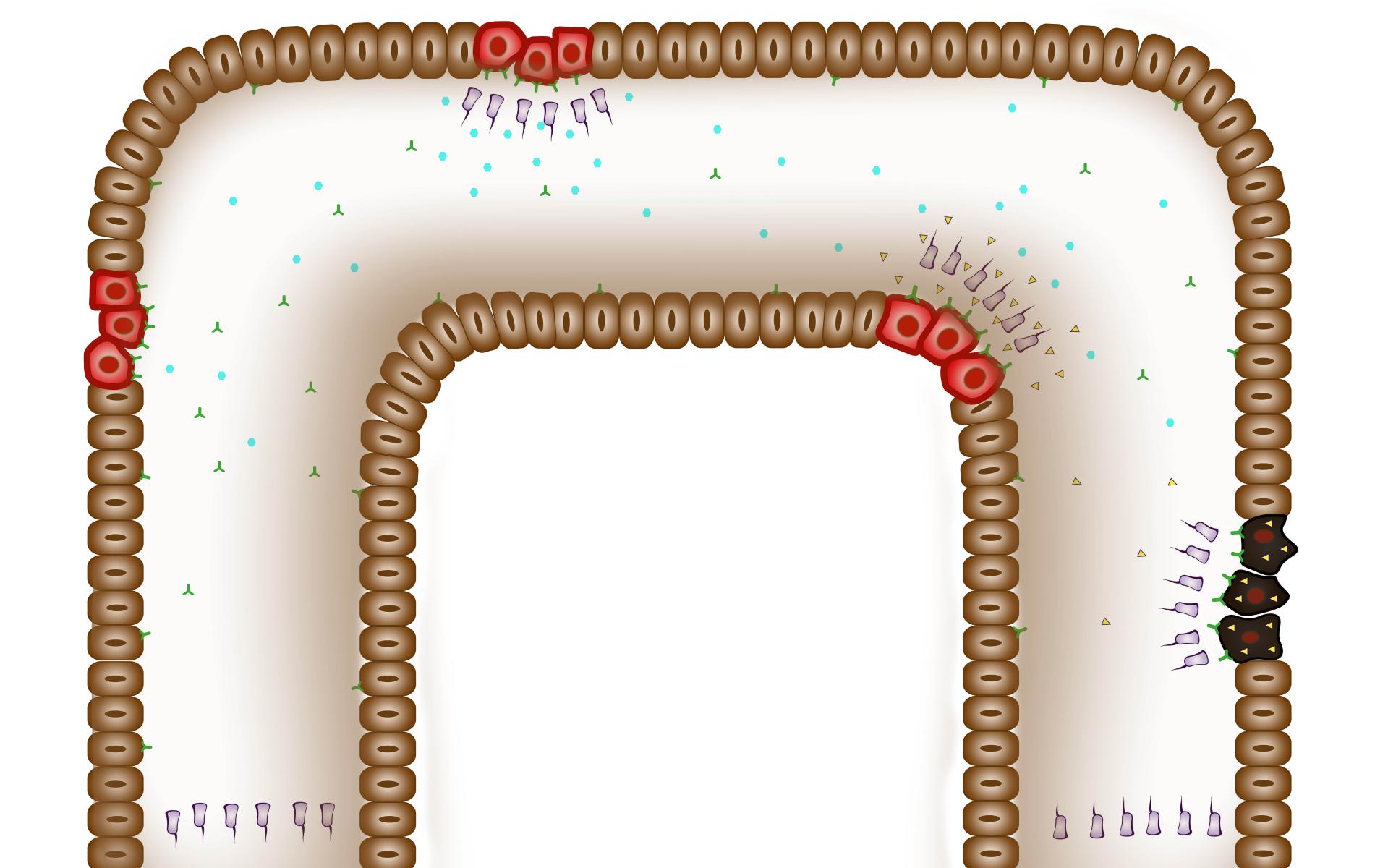Team:ATOMS-Turkiye/Project/Module1:Experiment
From 2013.igem.org
Data Page
BBa_K1202100 – Nanofactory Binding Zone (C215)
This is the primary section of NanoFactory design. This part is one of the active domains of anti-EpCAM (Epithelial Cell Adhesion Molecule) antibody. We use this part in our NanoFactory system as a binding zone to EpCAM antigen. We added additional histidine tag for purification purposes. Also we added a linker sequence; thus, we want to prevent misfolding in our proteins.
BBa_K1202101 – Nanofactory Enzyme Zone (LuxS-Pfs)
Second section of NanoFactory consists of an enzyme complex which is responsible for the transformation reaction of S-adenosyl homocysteine (SAH) into autoinducer-2 (AI-2) quorum sensing unit. We planned to use this part as an attractor for bacteria after cancer cells are detected and stabilized by NanoFactory Binding Zone (BBa_K1202100).
BBa_K1202102 – Nanofactory Connecting Domain (Protein G)
Protein G is used as a protein linker domain and antibody Fc section binding tag in literature. In our design, NanoFactory consists of two main sections: Binding and enzyme zones. By linking these two sections with Protein G, we hope to conduct excellent protein folding and less complication in our experiments. Additionally, we want to use the Fc binding ability of Protein G for the alternative NanoFactory binding zone construction technique.
BBa_K1202103 – TAT-Apoptin with HlyA Signal Peptide
Our cancer killing system, TAT-Apoptin, must be secreted from our bacteria. For this purpose, we decided to add HlyA signal peptide in the downstream region of our part. HlyA works only if it is placed in the N-terminus of protein. With this design, our TAT-Apoptin system can go out from bacteria.
BBa_K1202104 – TorA-GFP
This construct is designed to test our TorA signal peptide function. In our plan, produced green fluorescent protein (GFP) must diffuse into the media via this signal peptide. Thus, this should allow us to measure it with excitation and emission assay.
BBa_K1202105 – TAT-Apoptin: Cancer killing peptide
TAT-Apoptin was designed to induce programmed cell death (apoptosis) in cancer cells, selectively. TAT signal peptide added to direct apoptin into cancer cells.
BBa_K1202106 – TAT-HA2-Apoptin: Cancer killing peptide
HA2 peptide sequence is demonstrated that, with the combination of TAT, the cell penetrating activity increases considerably. We added HA2 in our TAT-Apoptin system to empower the yield of cancer killing mechanism.
BBa_K1202107 – TAT-E4-orf4: Cancer killing peptide
The general attitude to our parts is to designate alternative parts. For cancer killing mechanism, we searched through literature and found E4orf4 peptide. This derivative prospective cancer drug, like apoptin, induces apoptosis in cancer cells, selectively. Moreover, in literature and, of course iGEM, TAT-E4orf4 combination is completely novel.
BBa_K1202108 – pLsr promoter and LsrR Generator
Lsr operon is one of the existing operons in E.coli for selective production of designated proteins in different conditions. This production chain is regulated strictly by using repressors and activators. In Lsr system, LsrR is the main repressor of the promoter and can only be inhibited by the presence of phosphorylated autoinducer-2 (AI-2) quorum sensing unit. (see diagram) We want to use this part to conduct cancer detecting mechanism in bacteria.
BBa_K1202109 – LsrK Generator
Lsr system consists of three components, mainly. Lsr promoter, LsrR repressor and LsrK enzyme. This enzyme works as phosphorylase that catalyzes AI-2 phosphorylation reactions. AI-2-phosphorus complex allows the inhibition of repression effect of LsrR on Lsr promoter and provides the production of desired protein. Via this system, we want to regulate the production of our cancer killing peptides.
BBa_K1202110 – AI-2 Generator (LuxS-Pfs)
Alternative to our NanoFactory design, we plan to use our E.coli as a nano scale cancer searching device by presenting NanoFactory Binding Zone on the outer membrane and, in the case of detection, signal transmitter by producing AI-2 into the media. This part works as NanoFactory Enzyme Zone in bacteria by transforming intracellular SAH into AI-2.
BBa_K1202111 – MPG-Apoptin: Cancer killing peptide
We decided to use an alternative cell penetrating peptide instead of TAT. Likewise, MPG directs the attached protein into the eukaryotic cell cytoplasm. We want to use this activity to conduct our apoptosis inducing effect of our cancer killing proteins.
BBa_K1202112 – GFP-HlyA
This construct is designed to test our HlyA signal peptide function. In our plan, produced green fluorescent protein (GFP) must diffuse into the media via this signal peptide. Thus, this should allow us to measure it with excitation and emission assay.
BBa_K1202113 – TAT-RFP
This part is designed to measure the cell penetrating effect of TAT peptide. In our plan, in the case of good penetration, we could emit red fluorescent in cancer cell cytoplasm. This would allow us to say that our TAT directs the desired proteins into the cells efficiently.
BBa_K1202114 – C215 Presenting Dock (With OmpA)
OmpA is widely used transmembrane, antigen presenting protein in literature and iGEM, and also, is used as a signal peptide. We want to use as an advantage and use it in our alternative NanoFactory design which proposes to use our E.coli as NanoFactory. OmpA will allow us to present NanoFActory Binding Domain on outside of bacteria cell wall. This would ends with the efficient binding of bacteria on cancer cells.
BBa_K1202115 – TorA-TAT-Apoptin
This part is designed to measure the secretion potency of our signal peptide, TorA, for our cancer killing peptides. To provide this, we plan to perform SDS-PAGE and Western blotting assays in supernatant samples by adding histidine tags to our peptides.
BBa_K1202116 – pLsr Complete System (Receiver)
This is the combination of the parts “pLsr promoter and LsrR Generator” and “LsrK Generator”. This is the final design for Lsr system and allows us to measure the quorum sensing potency of autoinducer-2 (AI-2) stimulation and Lsr promoter production ability.
 "
"
